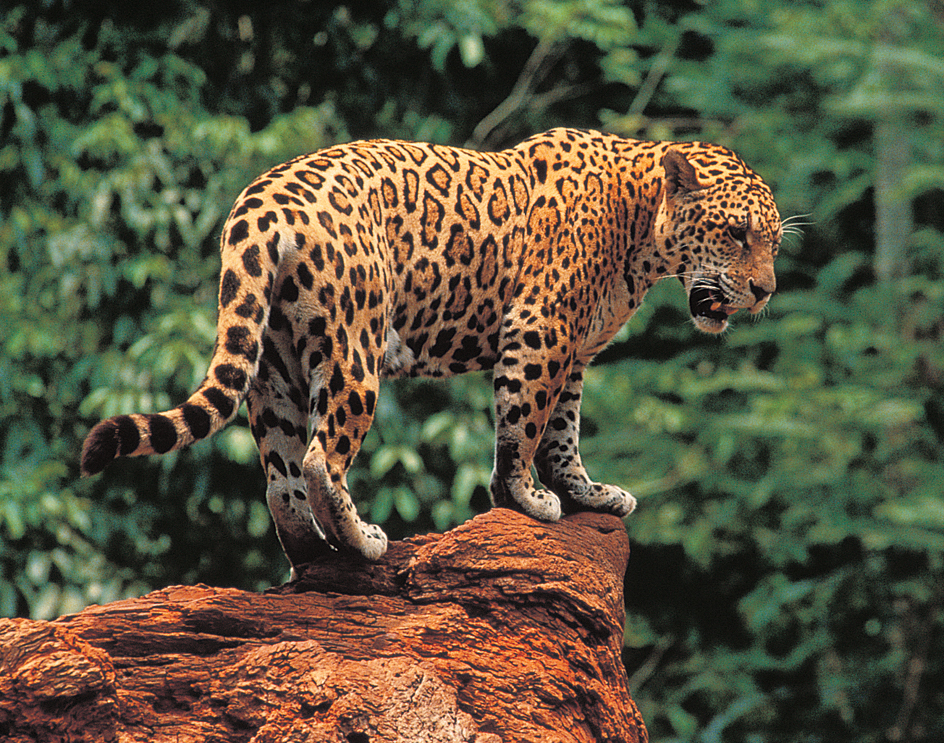Jaguar, << JAG wahr, >> is the largest, most powerful wild cat of the Western Hemisphere. Jaguars occur in Mexico and Central and South America. Small numbers survive in southern Arizona and New Mexico. They once roamed in southern California, Louisiana, and Texas.

Jaguars live in forests, shrubby areas, grasslands, and swamps. They eat almost any kind of animal, including armadillos, deer, fish, wild pigs, tapirs, turtles, and capybaras and other rodents. Jaguars hunt mainly on the ground and at night.
Loading the player...Jaguar growl
Jaguars measure from 5 to 81/2 feet (1.6 to 2.6 meters) long, including their 11/2 to 21/2 foot (45- to 75-centimeter) tail. They weigh from 90 to 300 pounds (40 to 140 kilograms). South American jaguars are much larger than those that live in Central America. A jaguar has golden or brownish-yellow fur and many spots. The spots along its back and sides are called rosettes. They consist of clusters of dark spots or irregular blotches that may have one or more dark spots in the center. Black jaguars are common in South America. The jaguar symbolized power and courage to the ancient Maya, who considered the animal a god.
It is thought that male and female jaguars live together only during the mating season. After a pregnancy period of 95 to 110 days, the female gives birth to one to four young. Newborn jaguars weigh between 11/2 and 2 pounds (0.7 and 0.9 kilogram). The young hunt with their mother during their first two years. They reach full adult size by age 4.
Jaguars have become rare, largely due to loss of habitat and overhunting. Jaguars are protected by laws in most of the countries where they live.
